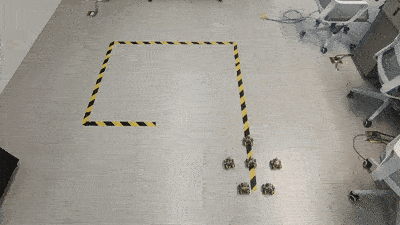Responsiveness of Swarm Robots
Fast Consensus via Neighbor Selection
|  |
|  | |
| |  |
|  |
|
 |
|  | |
| |  |
|  |
| State-of-the-art
- Bio-Inspired Algorithms: Research heavily relies on decentralized control rules inspired by social insects (ants, bees) for tasks like flocking, foraging, and collective decision-making, using algorithms based on stigmergy and local interactions.
- Scalability and Robustness: A key focus is designing systems that are inherently scalable (to hundreds or thousands of units) and robust to individual failures without a single point of failure.
- Hardware Platforms: Development of cost-effective, specialized robotic platforms (e.g., Kilobots, Pheeno) that facilitate large-scale experimental validation of swarm algorithms.
- Simulation-to-Reality (Sim2Real): Heavy use of advanced simulation environments (e.g., ARGoS, Gazebo) to develop and test controllers before costly and complex real-world deployment.
- Limited Autonomy: Most swarms operate in pre-defined environments or on specific, repetitive tasks. Their ability to understand high-level language commands or adapt to truly novel situations is minimal.
Future Research Directions
- AI and Machine Learning Integration: Incorporating deep reinforcement learning and evolutionary robotics to allow swarms to learn and optimize their behaviors autonomously in complex environments.
- Human-Swarm Interaction (HSI): Developing intuitive interfaces (e.g., using gesture, augmented reality, or natural language) for humans to command and monitor large swarms effectively.
- Heterogeneous Swarms: Moving beyond homogeneous groups to design systems where robots with different capabilities (e.g., flying, ground-based, sensing) collaborate seamlessly.
- Application-Specific Deployment: Transitioning from lab demonstrations to real-world applications in areas like precision agriculture (distributed crop monitoring), disaster response (search and rescue in rubble), and environmental monitoring (distributed sensor networks).
- Ethical and Safety Frameworks: Establishing guidelines for predictable, safe, and accountable operation of large-scale autonomous systems, especially in human-populated environments.